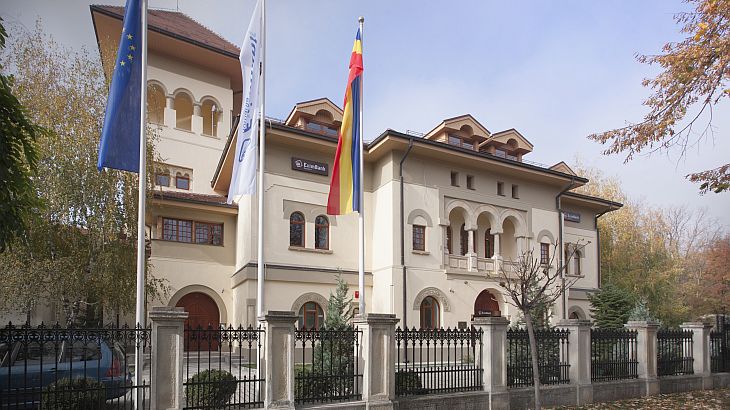###author###
Eximbank may be the future vehicle for leveraging energy and infrastructure projects worth billions of euro.The authorities have decided recently that the future Romanian development bank should be developed on the EximBank’s structure the activity focusing on financing the economy and improving the efficiency of macro economic policies, as well as emphasizing the European funds absorption between 2015-2020 by ensuring the co-financing of the Romanian projects that stand for the country’s engagements to EU, with a potential impact of 6 billion Euro, a release sent to energynomics.ro reveals.
„Financial results and high solvency rate of the bank, the intensification and diversification of the economy support activities, as well as the specificity of the legal framework adapted to the authorities’ expectations in terms of the launching a development bank in Romania are the main arguments that fundament the appointment of EximBank as the manager of the future entity’s activity, based on the Polish business model”, said Traian Halalai, President of EximBank.
EximBank has constantly improved its activity during the last two years reaching a level of financial indicators above the average of the financial market. In 2014, the bank has increased its total exposure up to almost 5 billion Lei at the same time keeping an extremely low level of non performant loans (3.1%, much more lower than the average of the banking system which is approximately 14%).
”All the more so, appointing EximBank to be the implementation unit for the project of creating a Romanian development bank represents the acknowledgment of our constant efforts of last years to upgrading the bank’s activity. At present, EximBank holds all the necessary advantages to lay out the specific operations of the development bank: solid business generating profits year over year, improved assets structure, high solvency rate and a professional team able to implement and manage the activity of a development bank. An important role, of course, in choosing EximBank for this project belongs to the actual organizational and functional structure of the bank – pretty close to the one specific of a development bank as well as the expertise in operate the State funds”, added Traian Halalai.
A fund using Polish model could attract between 3 to 15 billion euros for Romania
An investment fund established after the Polish model in Romania from privatization revenues could rise to 3 billion euros, previouslz said Lucian Anghel, president of Bucharest Stock Exchange and CEO of BCR Pensions. In Poland the state can invest between 20 and 49% in a project, and such lo fund can attract a cumulated private investment between 3 and 15 billion euros, keeping parities. This can finance projects in energy and infrastructure, said Anghel.
“If we add the last two years of IPOs and SPOs done by State (initial and secondary stock sales), we are close to 1 billion euros. The state could raise 3 billion euros from companies going public, and we can create an investment fund after Polish model that would attract both private investment and major institutional investors such as the EBRD or EIB”, said Anghel.
What models have been studied
Halalai also said that, by extending the current mandate of EximBank there are premises for improving the efficiency of the local economy support mechanisms as well as for a better synchronization of the bank’s activity with the governmental policies and strategies, both nationwide and for specific activity domains.
”There will be an extension of the current bank’s activity in terms of higher participation of EximBank in the field of attracting European funds as well as holding a leading position in implementing national and regional projects of infrastructure development”, declared the President of EximBank.
Traian Halalai has mentioned that in order to opt out the business model for the future Romanian development bank, EximBank’s have analyzed the similar institutions in European Union (HBOR – Croatia, MFB – Hungary, KfW – Germany, BDB – Bulgaria etc.) concluding that the most adequate operational model as per the authorities’ expectations is the one implemented in BGK (Bank Gospodarstwa Krajowego), the Polish development bank.
”The Polish model – that has a proven capacity in terms of financial instruments and financing solutions viability especially in the attraction of European funds field- is very well adjusted tot he actual organizational architecture of EximBank allowing a rapid implementation of the project with no additional budgetary expenses”, added Traian Halalai.
He has mentioned that the future functioning framework of the development bank will be finalized as soon as possible by the working group uniting experts from EximBank, Ministry of Finance and Ministry of European Funds.

